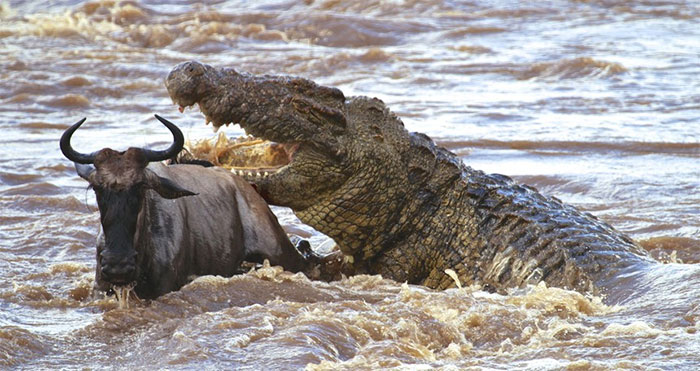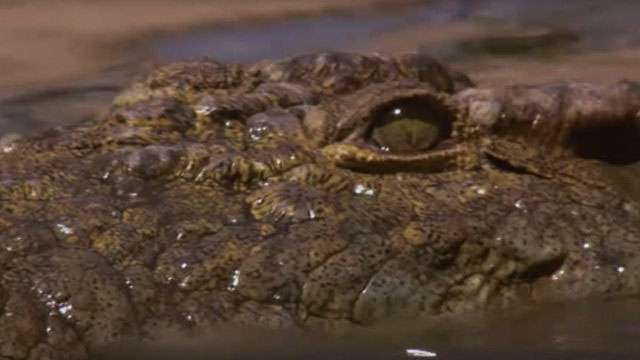The path to success is often paved with sacrifices and trade-offs.
The wildebeest is a unique animal with a somewhat bizarre appearance, combining the head and horns of a cow, the tail of a horse, and highlighted by a tuft of long black hair. However, they are neither cattle nor horses; they belong to the antelope family, scientifically named Connochaetes gnou.

Nile crocodile attacking wildebeest.
With their fierce and aggressive appearance, wildebeests are actually gentle herbivores, predominantly found in Africa, with a significant population in Kenya and some in Namibia and other countries.
During the breeding season, each wildebeest mother gives birth to only one calf per year. However, since the herd tends to be pregnant around the same time, when one wildebeest gives birth, it typically means that the entire herd is giving birth as well.
This may sound like a lot, but according to zoologists, the survival rate from birth to adulthood for wildebeests is very low. It is estimated that out of every six wildebeests, only one survives past its first year of life.
The reason is that wildebeests are a vital food source for predators such as lions, leopards, hyenas, and crocodiles, as shown in the clip below.
Through this short clip, the author takes viewers to the plains of Maasai Mara National Park in Kenya during the wildebeest migration.
Clip source: BBC Earth.
The most famous wildebeest herds are found in the Serengeti region of Tanzania and Kenya. In these areas, the number of migrating wildebeests can reach nearly 2 million. Along with hundreds of thousands of gazelles and zebras, the wildebeest migration is perhaps the largest terrestrial animal migration.
According to scientists, this seemingly grand migration comes with significant risks. The participants face not only the danger of injury while jostling for space but also numerous threats when crossing rivers teeming with crocodiles and lions lying in wait on the opposite bank.
As shown in the clip, the dense herd of wildebeests casually drinks water, unaware that just below the surface lurks one of the most fearsome predators on Earth.

The sharp, unforgiving gaze of a prehistoric predator.
The Nile crocodile is a species of crocodile in Africa, recognized as one of the largest predators that haunt all creatures, including humans, within their habitat.
It is known that an adult Nile crocodile can weigh around 225 kg (500 lb), with some individuals reaching up to 700 kg (1,500 lb). Reports suggest that this species can grow to lengths of up to 7 m (23 ft) or even larger.
Not only is it of “giant” size, but this predator is also extremely intelligent and cunning. A common tactic used by Nile crocodiles is to camouflage themselves by submerging in water, then approach their prey and attack with high speed.
With sharp teeth and a “terrifying” force behind each bite, their finishing moves typically leave no creature alive. Statistics show that this species has the strongest bite force in the animal kingdom, approximately eight times stronger than that of a great white shark.
A study has indicated that Nile crocodiles are responsible for between 275 to 745 attacks on humans annually, a number greater than that of any other crocodile species combined.


















































